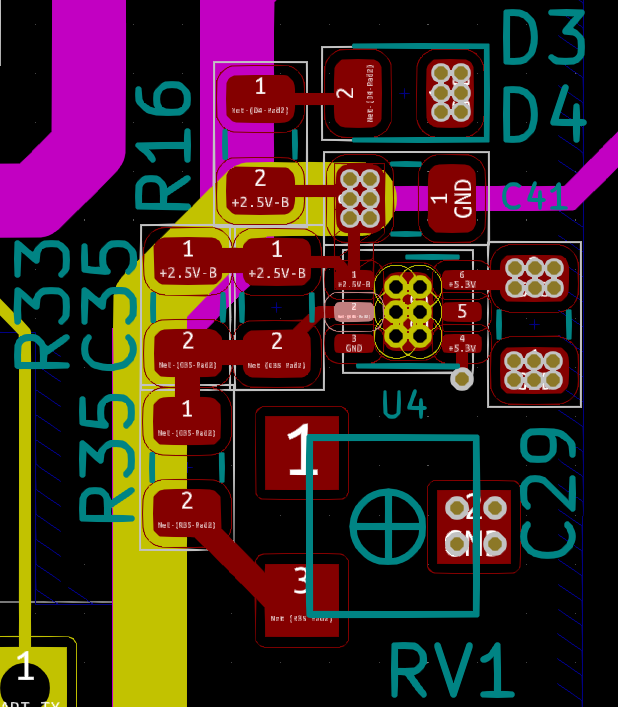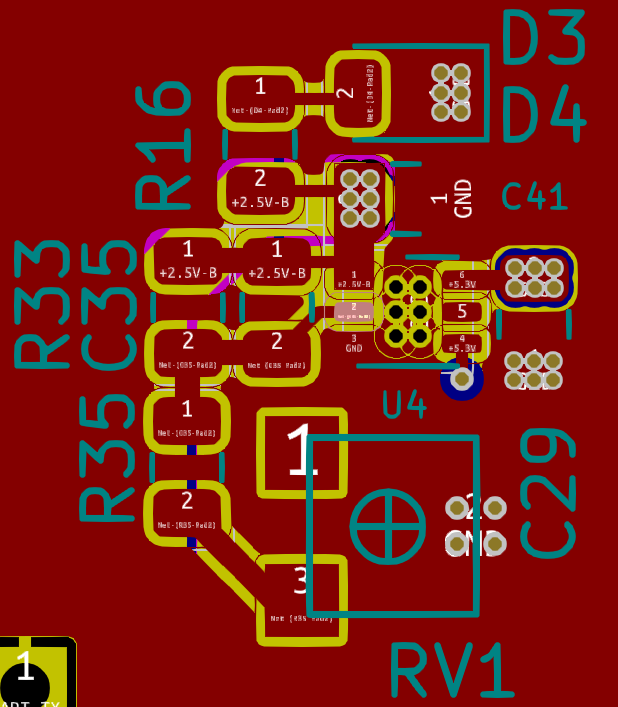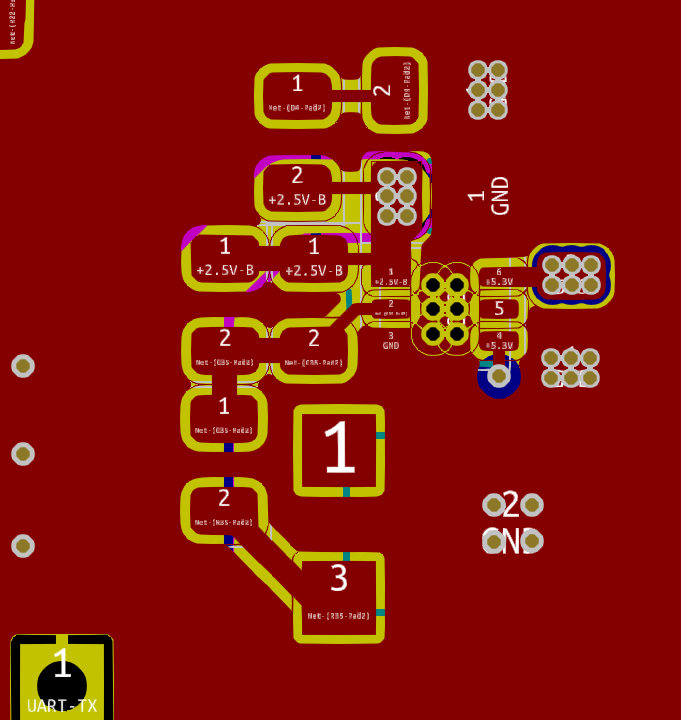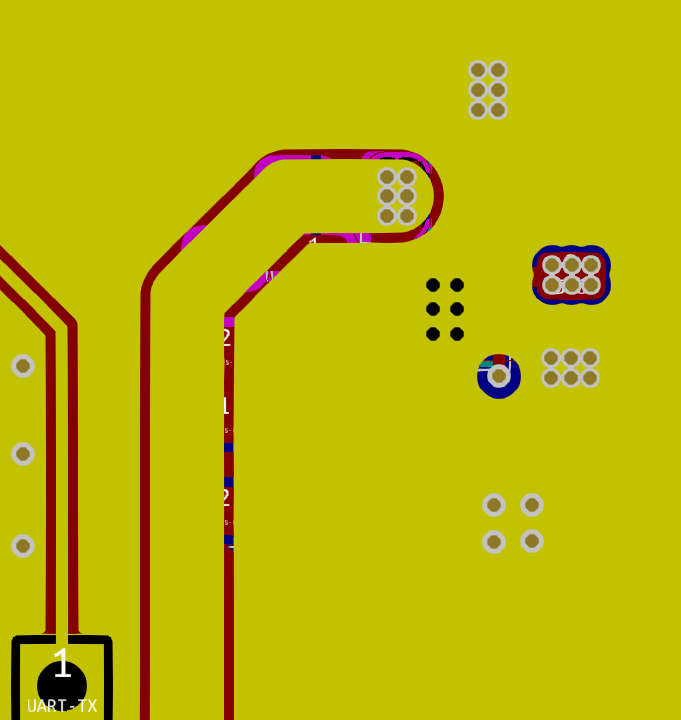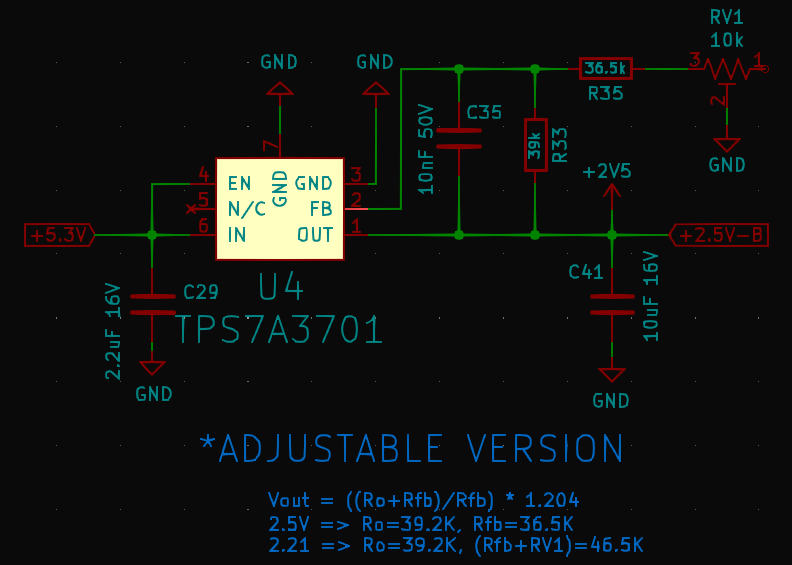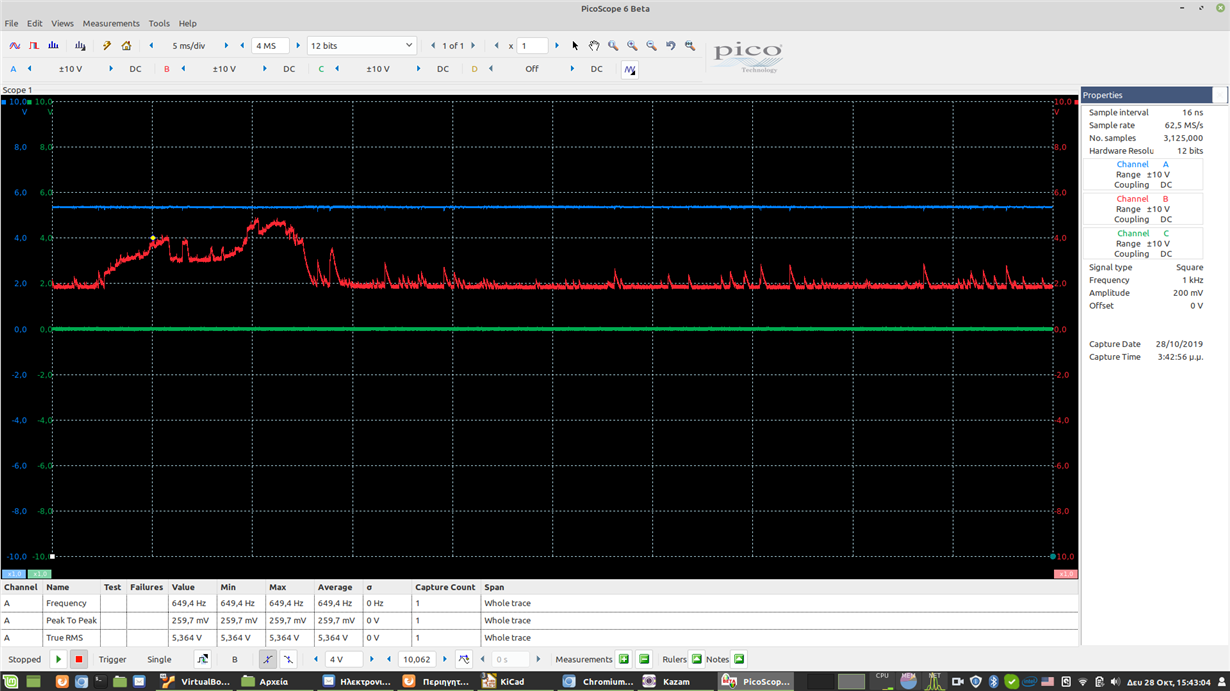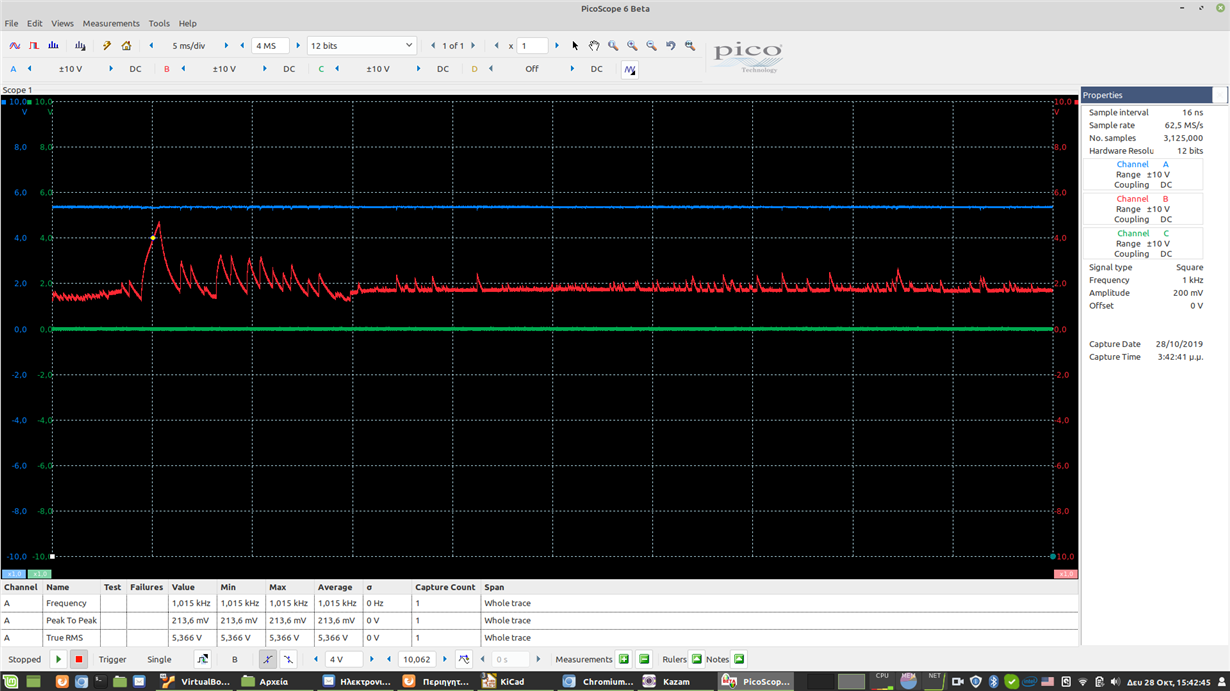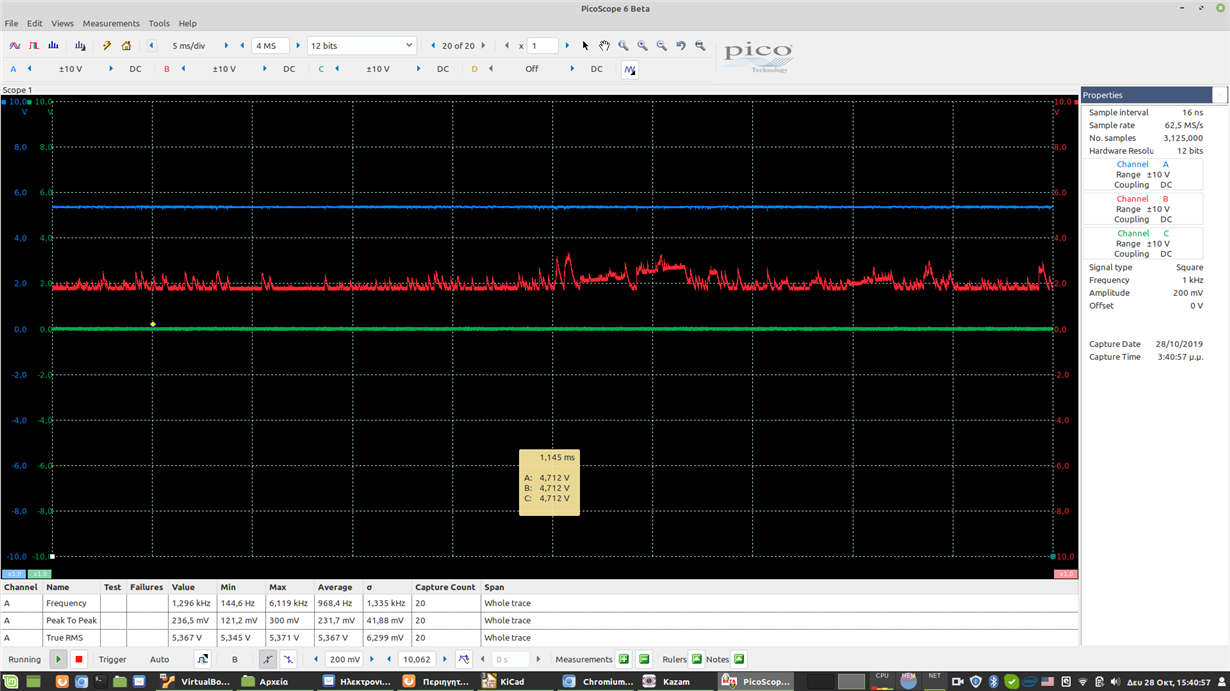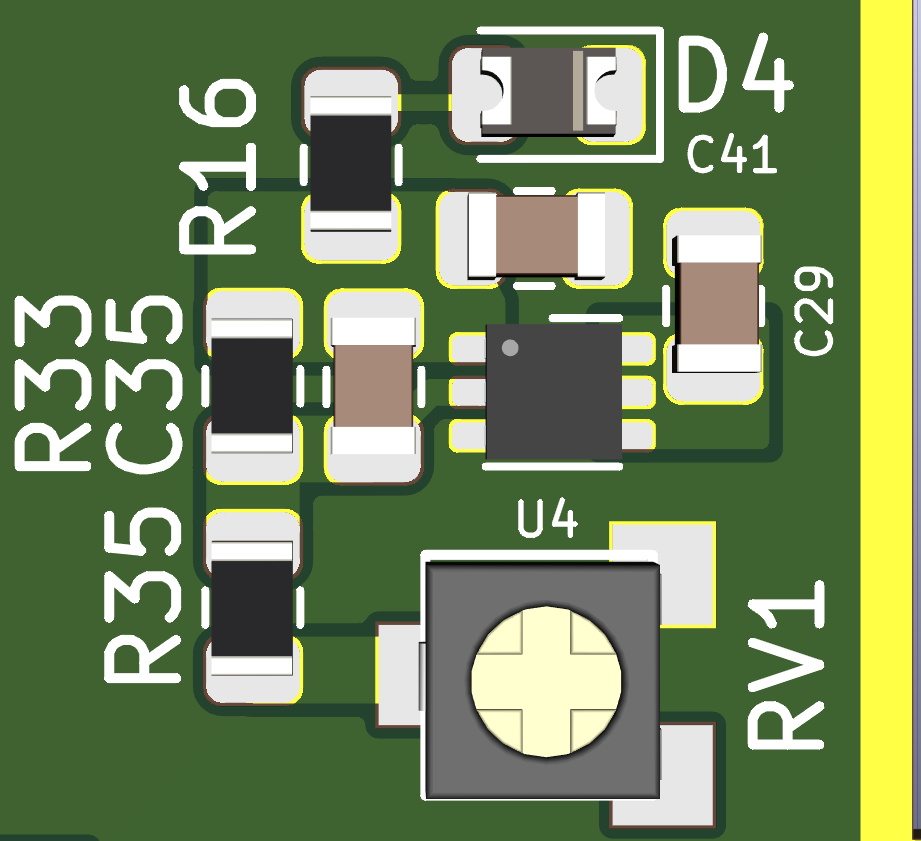Other Parts Discussed in Thread: LP5912, LP5907, TPS63710, , TPS7A87
Hi everyone,
I have designed a multi-stage PS that outputs
1) +5.0V (LP5912)
2) +5.0V (LP5912)
3) +3.3V (LP5907)
4) +2.2-2.5V (TPS7A3701 - Adjustable version)
5) -2.2-2.5V (TPS63710 & ADP7183)
I have lot's of experience on pcb design and during the last 3-4 years in 6-layer implementations.
The current implementation is a 6-layer:
- (Top layer) GND + small signals
- GND+ power signals mostly
- GND+ power signals mostly
- GND + 5.3V plane (under TPS7A3701) + power signals mostly
- GND
- (Bottom layer) GND
I have leds on all outputs with the correct R in series so that i can see whether any of the outputs are having issues (at least those that can affect the led illumination).
The 5.0V outputs work fine and so does the 3.3V. The TPS63710 output also works exceptionally well with my DMM reading -3.00V every single time i measured.
All measurements were done with no load except for one of the +5.0V outputs where a two Atmel microcontroller stage is connected.
I am feeding all PS stages inputs with 5.3V from my bench PS except for the ADP7183 which is supplied by the the TPS63710 with -3.0V.
The TPS7A3701 & ADP7183 are making my life soooo hard.
*I do not expect any comments regarding ADP7183. I am just mentioning the fact which could help you jump into usefull conclusions.
TPS7A3701:
I used solder paste + hot airgun during my first attempt. The led did not light up. I unsoldered and re-soldered the same part (2nd attempt) using lots of flux. Visibly, i can tell you that everything looked perfect. I used a microscope to see if the soldering was good and everything seemed fine. Moments later the led started lighting up but not in a stable way. It was more or less trembling (going on & off very fast). I went on with a 3rd attempt with a NEW part. The led lighted up and the voltage adjustment range was pretty close to the one mentioned above +2.2-2.5V. I think that it was about 15 mins later when the led looked brighter and when i measured the output, it was 5.3V (same with the input). I re-did an unsoldering and re-soldering of the same part (attempt 4) and the result was about the same. I then used the hotair gun over the chip @ 100 deg celcius for 30sec or so and it worked fine for maybe half an hour until i quit (for today).
ADP7183:
I do not remember exactly how it behaved but i can tell you that it was not stable. Some times trembling, sometimes it stayed off for long then went on for a bit longer and so on. The second attempt on the 2nd part gave me a more stable result with the stability being good for maybe an hour. Then it went off then trembling and so on.
I am really confused. I do not know what on earth i did wrong. I do not know why the problem persists on the two -/+2.5V outputs. I do not know why the others are fine and the two -/+2.5V are making my life hard.
I know that the layout plays a key role in the stability, the input & output caps, the quality of the caps (X7R or even better COG). I used X7R at 16V which is much higher than the working voltage (as biasing reduces capacitance) rails and capacity higher than the one required to ensure stability.
Did i over-do it with the 10uF at the output of the TPS7A3701?
Is it the stress from the high temp air gun? ( i have done it 1000 times on other smd ICs)
Is it the layout? I know that the decoupling caps must be really close to the in/out pins. Please see below
Is it some weird phenomenon that i am missing here?
Is it that the 5.3V is too close to the upper 5.5V input rail limit?
Is it just that the soldering has to be just perfect?
Is it the tiny dust particles between the pins?
Do you see anything wrong in the schematic?
Is it the input trace that is too thin? Just noticed it...
Is it the aliens?
The TPS7A3701 is a humidity level 2 sensitivity device and came from mouser.com inside a bag with the related card with the coloured round sections which were the correct colour at the time i opened the bags but also during the subsequent soldering of the second part. So i did not bake the device.
TOP LAYER + SILK SCREEN ^
TOP LAYER ^
INNER LAYER 1 ^
INNER LAYER 2 ^
INNER LAYER 3 ^
INNER LAYER 4 ^
BOTTOM LAYER ^
I could use any help that you can give me right now. I have been working on my project for months (not just this PS) and this is really stressing.
Best Regards
Emmanouil Tsachalidis


